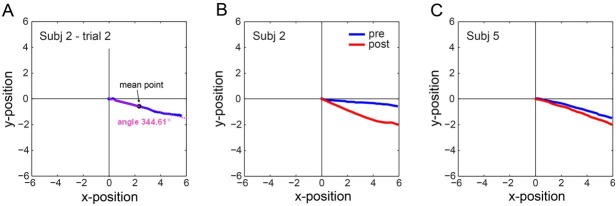Figure 2.

Two-dimensional eye position and direction calculation. (A) Two-dimensional eye position of a single trial (blue) and the calculated eye movement direction (pink). Eye movement direction was calculated using the mean point of the two-dimensional eye position (black dot) and then connecting it to eye position at pursuit onset; the resulting line (pink) indicates pursuit direction. (B, C) The average two-dimensional eye position in the pretest (blue) and the posttest (red) for two observers in the perception-training group. Perception training increased the overestimation in eye direction.
